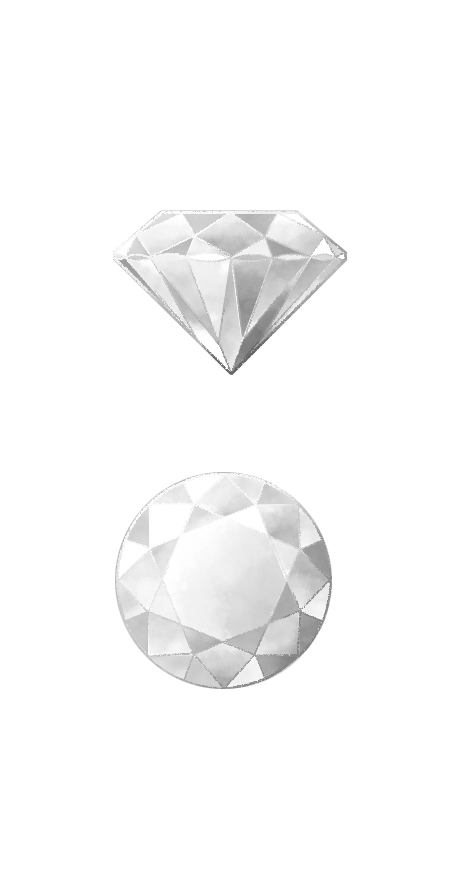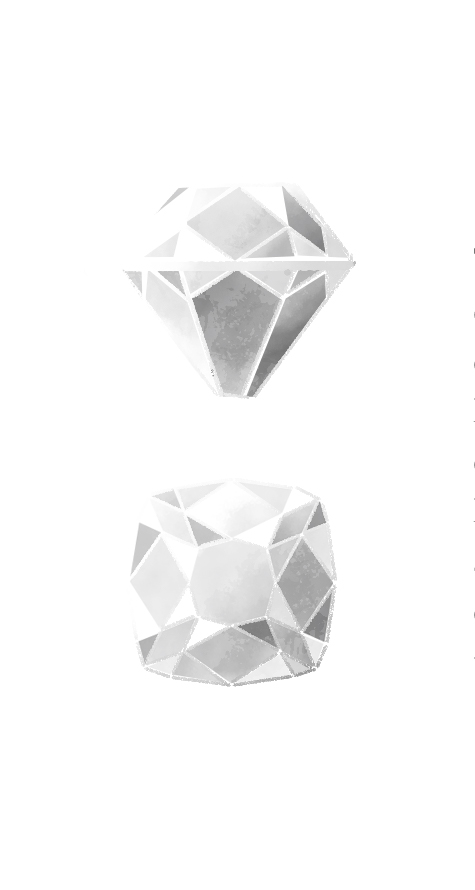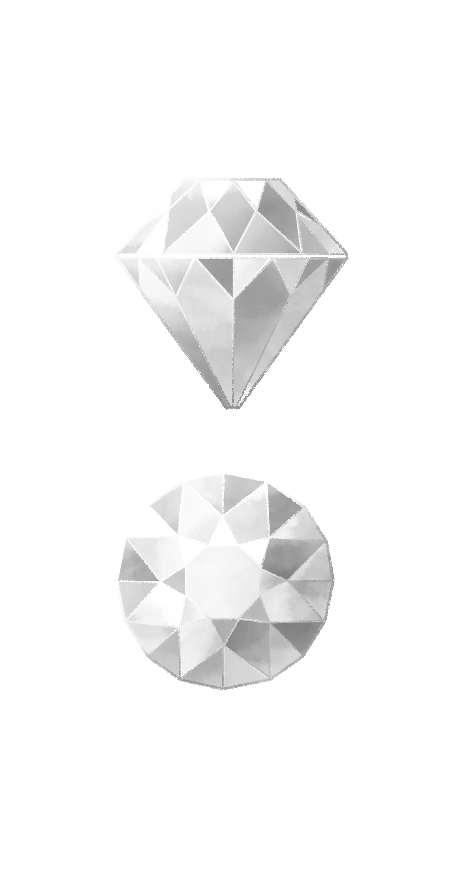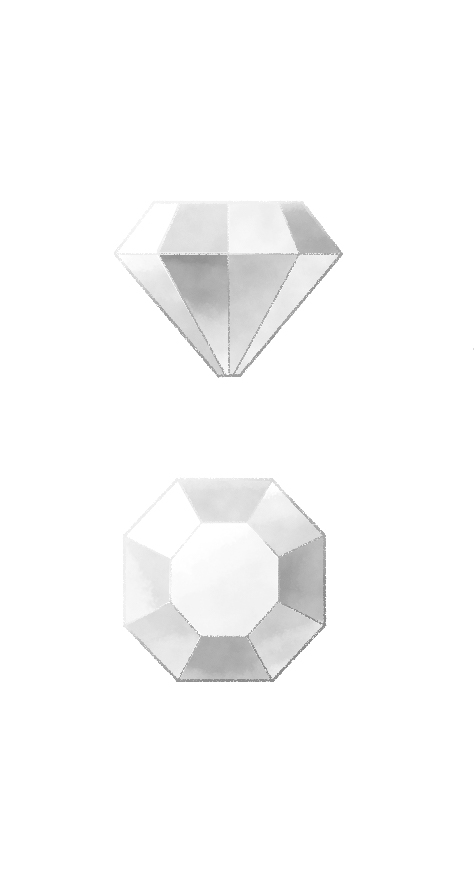Antique Diamond Cuts
Appreciating the craft and artistry that goes into creating a diamond begins with understanding one of the most basic attributes of any gem, modern or antique: the cut.
One of the most readily apparent of the four Cs, cut is about more than just shaping rough stones into sparkling gems. The way a particular jewel is cut can reveal hidden beauty, capture rainbows of light, and dazzle the eye.

A Basic Blueprint of the Modern Diamond
A contemporary diamond has a distinct three-part structure, centered on the diamond's midsection (or girdle), topped by a crown on top and a pavilion on the bottom. The flat part on top of the diamond's crown is called the table, and is the gem's largest facet. On the other end of things, the tiny facet capping the diamond's pavilion is called the culet. Note: diamonds with pointed bottoms do not have a culet.
Modern cuts are designed to bring a diamond's inner fire (i.e., light reflected from the stone's facets) to life with high-tech equipment, maximizing appeal to please the contemporary marketplace. Grading such diamonds requires careful consideration of several factors, including crown angle, pavillion depth, girdle thickness, table size, polish, and symmetry.
But for those searching for something distinct-something truly unique-antique diamond cuts have hand-crafted allure that's difficult to resist. Modern evaluation tools don't always do justice to the special nature of these gems, and so we must place each cut carefully within its proper context.
Antique Diamonds: A Cut Above?
Prior to the invention of modern cutting techniques in the early 1900s, properly shaping a diamond required a heady blend of skill, tenacity, and luck. It was a slow, painstaking process, done by hand, that produced stones crafted with an eye toward carat weight as much as (or more than) scintillating beauty, although of course appearance was still critically important.
Because they lacked the machined precision and brilliance of modern stones, many antique diamonds have (unfortunately) been recut to fit modern sensibilities. However, a very large vintage and antique jewelry marketplace does continue to exist, and demand for diamonds and other stones cut in these classic ways has grown even as supply has dwindled.
Types of Antique Diamond Cuts
What kind of cuts can you expect to find with antique diamonds? Ancient and vintage techniques varied widely around, the world, but for most purposes, modern shoppers can expect to encounter the following four cuts.

Rose Cut
Introduced as early as the 1500s, rose cut diamonds were popular until the early part of the twentieth century and are enjoying something of a renaissance in the twenty-first. Shaped to resemble the petals of a rose bud, these diamonds are associated with romance, love, and the natural sparkle of diamonds, as they feature one of the earliest attempts at a more ambitious method of faceting.
A diamond with this cut will have:
- A flat bottom
- A dome-shaped crown, with facets meeting at a central point
- From three to 24 facets

Old Mine Cut
Today's "Brilliant" cut owes its existence to the Old Mine Cut. Also known as a cushion cut, Old Miner, Peruzzi Cut, and Triple-Cut Brilliant, stones with this shape boast a distinctive cushion-shaped girdle. Many experts consider this cut to be the first of the "recut cuts," as it was often used on older table or point cut stones to add brilliance.
An Old Mine Cut diamond will have:
- A high crown
- A small table
- A deep pavilion
- A large culet

Old European Cut
The circular sibling to the squarish Old Mine Cut, the Old European Cut is also a forebear of the modern Brilliant Cut. The brainchild of renowned American gem cutter Henry Morse, this cut first rose to importance in the 1870s and was an important step toward modern, machine-based diamond cutting techniques.
A diamond with an Old European Cut will have:
- A very small table
- A very heavy crown
- Substantial overall depth, crown to culet

Single Cut
One of the earliest and most basic of cuts, the Single Cut diamond is one that simply replaces the hard edges of a traditional Table Cut with basic facets. Valuing elegance and simplicity over flash and brilliance, Single Cut diamonds have been in use as long as mankind has been faceting diamonds.
A Single cut diamond will have:
- An octagonal girdle
- Eight bezel (or crown) facets, plus a table, for nine total facets on the top of the diamond
- Eight pavilion facets, plus a culet, for nine total facets on the bottom of the diamond Note: Single Cut diamonds without a culet are often referred to as New Single Cut diamonds instead.




